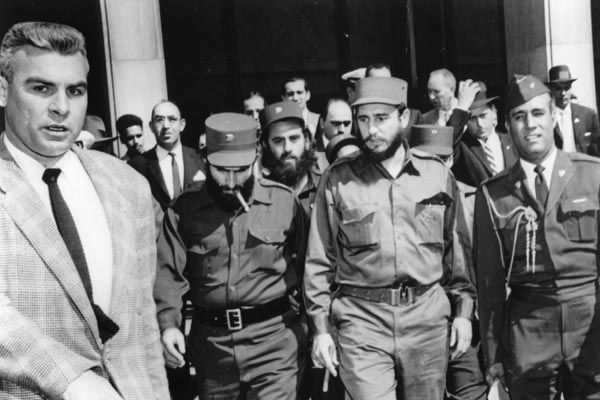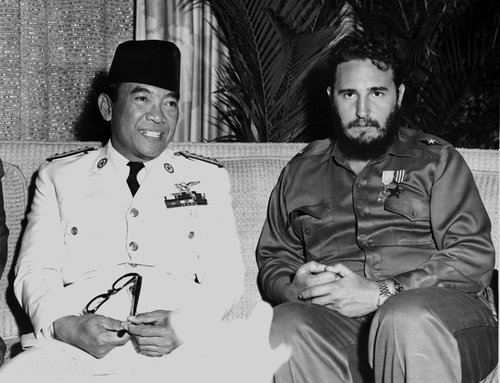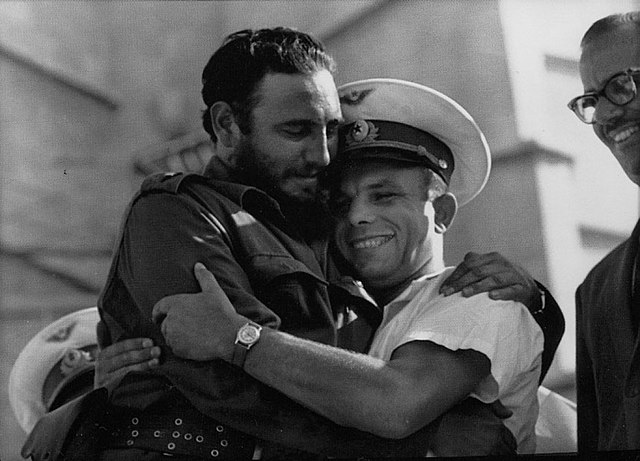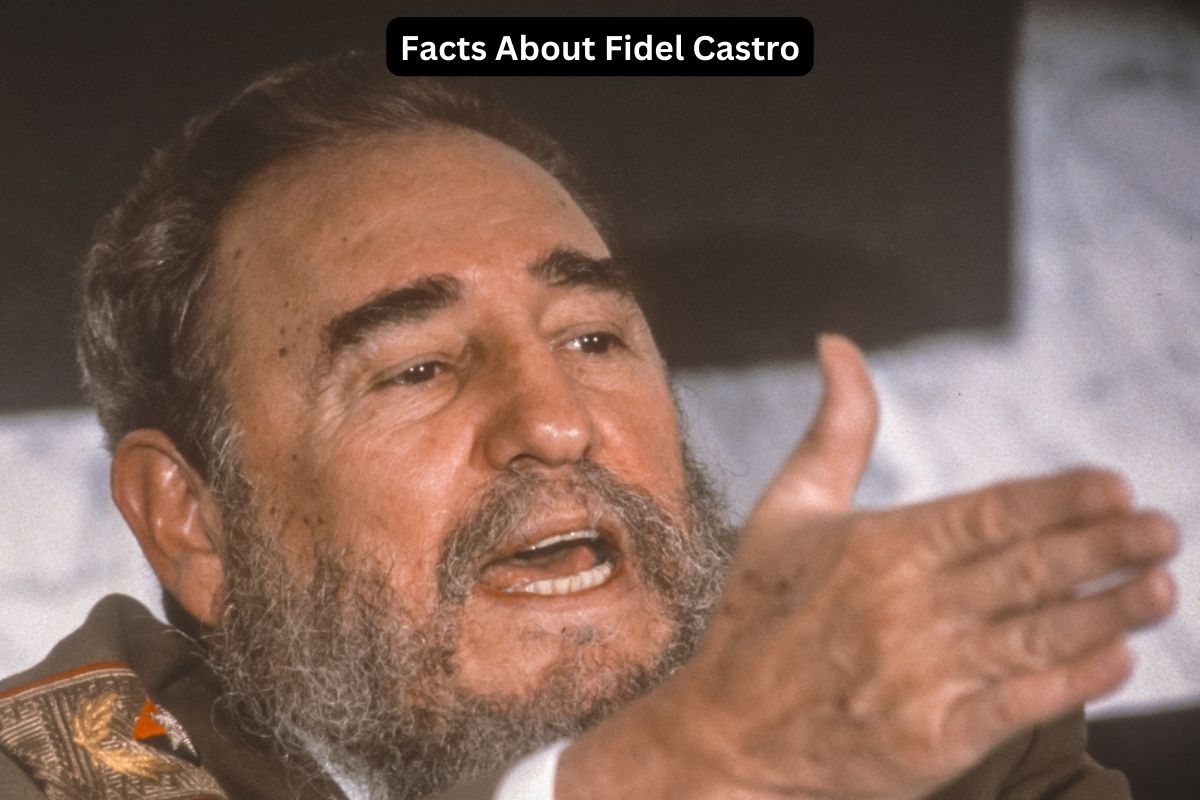Fidel Castro, the enigmatic leader who rose to power through the Cuban Revolution of 1959, continues to captivate global attention even after his death.
His nearly five-decade rule over Cuba left an indelible mark on the island nation and reverberated across international borders, shaping geopolitics and ideological debates.
This article delves into the multifaceted legacy of Fidel Castro, examining his revolutionary fervor, socialist policies, controversial actions, and enduring influence on Cuban society and global affairs.
From the triumphs of social reforms to the controversies of political repression, economic hardships, and Cold War brinkmanship, Castro’s complex legacy invites scrutiny and reflection on his role as both a revolutionary icon and a polarizing figure in history.
Fidel Castro Facts
1. Born on August 13, 1926, in Birán, Cuba
Fidel Alejandro Castro Ruz was born on August 13, 1926, in Birán, a small town in eastern Cuba. He was the son of a wealthy sugar plantation owner, Ángel Castro, and his maid, Lina Ruz González.
Also Read: Cuban Revolution Timeline
Growing up in a privileged environment, Castro received a Jesuit education before studying law at the University of Havana. His experiences as a student activist and exposure to leftist ideologies laid the groundwork for his future revolutionary activities.

2. Led the Cuban Revolution in 1959, overthrowing Fulgencio Batista’s regime
In 1953, Castro led an audacious attack on the Moncada Barracks, a military outpost in Santiago de Cuba, as a first step toward overthrowing the dictatorship of Fulgencio Batista. The attack failed, and Castro was captured and imprisoned.
However, his trial became a platform for his revolutionary ideas, famously declaring, “History will absolve me.” After being released as part of an amnesty deal, Castro went into exile in Mexico, where he met Ernesto “Che” Guevara and other revolutionaries.
Also Read: Accomplishments of Fidel Castro
In 1956, they returned to Cuba aboard the yacht Granma and launched a guerrilla campaign from the Sierra Maestra mountains. Their movement gained popular support, and on January 1, 1959, Batista fled the country, paving the way for Castro to assume power.
3. Implemented socialist policies, nationalizing industries and land
Following the revolution’s success, Castro’s government embarked on a series of radical reforms aimed at transforming Cuba into a socialist state.
These included nationalizing key industries such as sugar and mining, redistributing land to peasants, and implementing agrarian reforms.
4. Formed close ties with the Soviet Union, leading to Cuba becoming a communist state
Castro established diplomatic and economic ties with the Soviet Union, receiving economic and military support from Moscow.
These policies led to the United States severing diplomatic relations with Cuba and imposing economic sanctions, setting the stage for decades of Cold War confrontation between the two countries.

5. Survived the Bay of Pigs invasion in 1961
The Bay of Pigs invasion was a CIA-backed attempt by Cuban exiles to overthrow Fidel Castro’s government. In April 1961, around 1,400 Cuban exiles, trained and equipped by the United States, landed at the Bay of Pigs on the southern coast of Cuba.
The invasion was a disaster for the invaders, as Castro’s forces swiftly defeated them within three days. The failure of the invasion not only bolstered Castro’s domestic support but also strengthened his ties with the Soviet Union, as he sought protection against further U.S. aggression.
6. Was involved in the Cuban Missile Crisis in 1962
The Cuban Missile Crisis was a tense confrontation between the United States, the Soviet Union, and Cuba over the presence of Soviet nuclear missiles in Cuba.
In October 1962, U.S. reconnaissance flights discovered Soviet missile installations in Cuba, sparking a diplomatic crisis that brought the world to the brink of nuclear war.
Castro was not directly involved in the negotiations between U.S. President John F. Kennedy and Soviet Premier Nikita Khrushchev, but his support for the Soviet Union and his willingness to accept nuclear missiles on Cuban soil played a crucial role in escalating tensions.
The crisis was resolved through a secret agreement between the U.S. and the Soviet Union, in which the Soviets agreed to withdraw their missiles from Cuba in exchange for the removal of U.S. missiles from Turkey.
7. Ruled Cuba for nearly five decades, stepping down in 2008 due to health issues
Fidel Castro ruled Cuba for nearly five decades, from 1959 until 2008, making him one of the longest-serving leaders in modern history.
During his tenure, Castro held various official positions, including Prime Minister (1959-1976), President of the Council of State (1976-2008), and President of the Council of Ministers (1976-2008).
Despite facing numerous assassination attempts, internal dissent, and external pressures, Castro managed to maintain his grip on power through a combination of charismatic leadership, political repression, and strategic alliances.
In 2006, Castro’s health began to deteriorate, and he temporarily transferred power to his brother, Raúl Castro. He officially stepped down as president in 2008 due to health reasons, ending his direct rule over Cuba.

8. His regime was marked by human rights abuses and political repression
Fidel Castro’s regime was marked by significant controversy and criticism, both domestically and internationally. Domestically, his government’s policies led to political repression, censorship, and the suppression of dissent.
Many Cubans who opposed Castro’s rule were imprisoned, executed, or forced into exile. Internationally, Castro’s alignment with the Soviet Union and his support for communist movements in other countries drew condemnation from Western nations, particularly the United States.
The Cuban government’s human rights record and lack of democratic freedoms were also widely criticized by human rights organizations and foreign governments.
9. Faced criticism for economic hardships and mass emigration from Cuba
Despite initial achievements in areas such as healthcare and education, Castro’s economic policies ultimately led to widespread economic hardship in Cuba. The nationalization of industries and collectivization of agriculture disrupted the economy, leading to shortages of goods and services.
The U.S. embargo, imposed in 1960, further exacerbated Cuba’s economic woes by restricting trade and investment. As a result, many Cubans faced poverty, rationing, and limited opportunities for economic advancement.
The economic difficulties, coupled with political repression, prompted waves of emigration from Cuba, particularly during events such as the Mariel Boatlift in 1980, when thousands of Cubans fled to the United States in search of asylum.
10. His legacy remains polarizing, with supporters praising his anti-imperialist stance and critics condemning his authoritarian rule
Fidel Castro’s legacy remains deeply polarized, with supporters praising his role as a champion of anti-imperialism, social justice, and national sovereignty. They credit his government with significant achievements in areas such as healthcare, education, and literacy.
Castro’s supporters also view him as a symbol of resistance against U.S. imperialism and capitalism in Latin America and the Global South. However, critics argue that Castro’s authoritarian rule stifled political dissent, violated human rights, and caused economic stagnation and hardship for the Cuban people.
They point to the lack of democratic freedoms, censorship, and repression of political opponents as major shortcomings of his regime. Castro’s legacy continues to be a subject of debate and controversy, both in Cuba and around the world, shaping perceptions of his leadership and its impact on Cuban society and politics.
